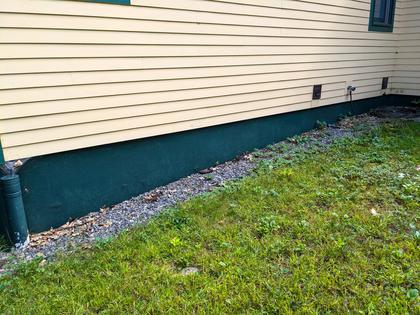Ask the Builder: Water infiltration the No. 1 problem homeowners face
I’m helping my son on the weekends to finish the basement in his 3-year-old house. He’ll be adding 1,300 square feet of finished living space. A few days ago, we met with the local building inspector. Donna gave us the thumbs up on the framing, plumbing and all the electrical rough installations. She’s been doing inspections in Nashua, New Hampshire, for 18 years.
At the end of the inspection, she discovered I was the Ask the Builder guy.
“Oh, I read your columns and watch your videos all the time!” she said.
I thanked her and mentioned that if her small four-person building department ever needed a speaker, I’d be happy to stop by and share some stories.
Donna thought that might be a good idea and said she’d talk to her boss about my suggestion. As I drove north back to my home, I thought about what might be the most helpful thing to share with building inspectors.
The thought crossed my mind to talk about the top three problems I solve week in and week out. You might be one of the many homeowners I’ve talked with on the phone or I might have answered your email. The top three problems I deal with each week are:
—Wet, leaky basements and crawlspaces, and soggy yards
—Roof leaks
—Water leaks under doors and leaks caused by inferior deck attachment to a house
You may not know this, but your local building code enforcement officer has the ability to make the building code more robust in your city or town. The building code you see online is a model code. Most cities and towns adopt it because they can’t afford to invest the time to develop their own code.
A one-size-fits-all building code works for many things, but not for all things. This is why local officials can modify the code to suit their housing stock, the local conditions and ingrained customs.
Foundation height is addressed in the code. There’s a small section that talks about how high a foundation must be above the ground next to it. Keep in mind the distance the code mentions is a minimum. I feel the distance should be double what the code says.
The building code also requires that the ground around a house must slope away from the foundation. Try to visualize your house being at the top of a hill. In reality, it’s easy to achieve this requirement, but too many builders put foundations too low into the ground, causing major drainage issues.
The issue is these mission-critical items don’t seem to be enforced in many situations. Based on the number of houses I see that don’t have the ground around the house at the right height and sloping away from the foundation, it’s clear to me inspectors are not holding builders’ feet to the fire in this area.
Roof leaks in a large majority of cases can be traced to defects in the installation of flashings. Flashings are roofing products that connect a roof to something that’s not a roof. You’ll find them around chimneys, skylights, plumbing vent pipes, turbine vents, dormers, valleys and so forth.
I feel building inspectors should do some heavy lifting in this area. I know they can’t be up on the roof acting as quality-control inspectors as the roofers work, but maybe it’s a good idea to force builders and roofers to take continuing education classes as other professionals do.
I solve water seepage under door thresholds many times a month. Once again, the root cause for this, in my opinion, is that builders and carpenters don’t receive thorough training in this skill. The required flashings to make door thresholds waterproof could be installed just after the roof is completed. Building inspectors doing the rough-framing inspection could verify that the door and window flashings are correct at this time since they’re already looking at the framing.
A house is the average person’s biggest investment in their life. People need to know that the most problematic areas of a house are built correctly. There has to be a way to get building departments and inspectors to help out in this respect since they have the power to issue a certificate of occupancy once the house is complete. I’m open to your suggestions and will pass them along to Donna.
Subscribe to Tim’s FREE newsletter at AsktheBuilder.com. Tim offers phone coaching calls if you get stuck during a DIY job. Go here: go.askthebuilder.com/coaching
©2024 Tim Carter. Distributed by Tribune Content Agency, LLC.






























Comments